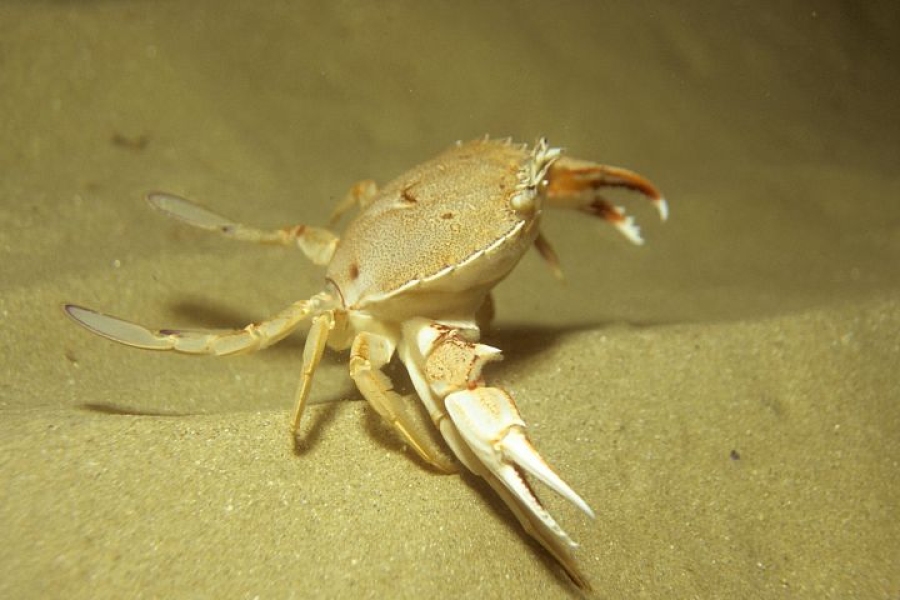Ever had a crab nip your toe at the beach? The culprit is most likely the paddle crab.
Ever had a crab nip your toe at the beach? The culprit is most likely the paddle crab.This agile swimmer is found in the intertidal zone (between high and low tide marks) all around New Zealand and in southern Australia, down to depths of 100 metres. It’s one of nine species of swimming crabs in Aotearoa New Zealand.
“Paddle crabs prefer sandy bottoms, especially on sheltered surf beaches,” says Shane Ahyong, crab taxonomist at NIWA. They’re especially active at night and at high and low tides, although you’re most likely to see them at low tide. During the day, they spend most of their time buried in the seabed, with only their eyes and antennae protruding.
“If you’re not lucky enough to spot a live paddle crab, you’ll often see their discarded or dead shells washed up on the beach,” says Dr Ahyong.
“Paddle crabs can swim sideways very quickly using the paddles on their rear legs. They also use their paddles to dig themselves backwards into the sand, which they can do very quickly when threatened.”
Their main predators are stingrays, dogfish, snapper, and other predatory fish. Humans also fish them for meat and bait. As for their prey, paddle crabs will eat almost anything, and even cannibalise smaller paddle crabs, but their staples are shellfish and small fish.
“They are aggressive but would only attack a human in self-defence. If a paddle crab nips you, it’s probably because you stood on it,” says Dr Ahyong.
Like cicadas, paddle crabs ‘stridulate’ – producing sounds by rubbing parts of their body together. In the crab’s case, they rub one of their legs against a rasp on the underside of their claw to serenade prospective mates. Their deepwater cousins don’t have rasps, but instead have evolved iridescent patches on their bodies to signal other members of their species, says Dr Ahyong.
Scientist bio:
Dr Shane Ahyong is a taxonomist (a scientist who formally identifies and describes species) at NIWA in Wellington. He is one of 18 experts who recently revised the classification of all the world’s decapod species (which includes crabs), whose numbers now stand at more than 14760. He formally named eight new New Zealand crab species last year, and has descriptions of another ten new crab species in the pipeline.
|
Species Fact file |
|
|
Common names: |
paddle crab, common swimming crab |
|
Māori name: |
pāpaka |
|
Scientific name: |
Ovalipes catharus |
|
Type: |
swimming crab |
|
Family: |
Portunidae |
|
Size: |
up to 15 cm across the shell |
|
Lifespan: |
4 years |
|
Diet: |
Shellfish, small fish & crabs, whatever they can catch or scavenge |
|
Reproduction: |
Female lays fertilized eggs, from which larvae emerge. There are several larval stages. |
|
Things you need to know: |
They’re agile swimmers, can bury themselves quickly in the sand, and will only bite you in self-defence! |
|
Something strange: |
When close to breeding, the male carries his mate underneath him until she moults, then mates with her. |

